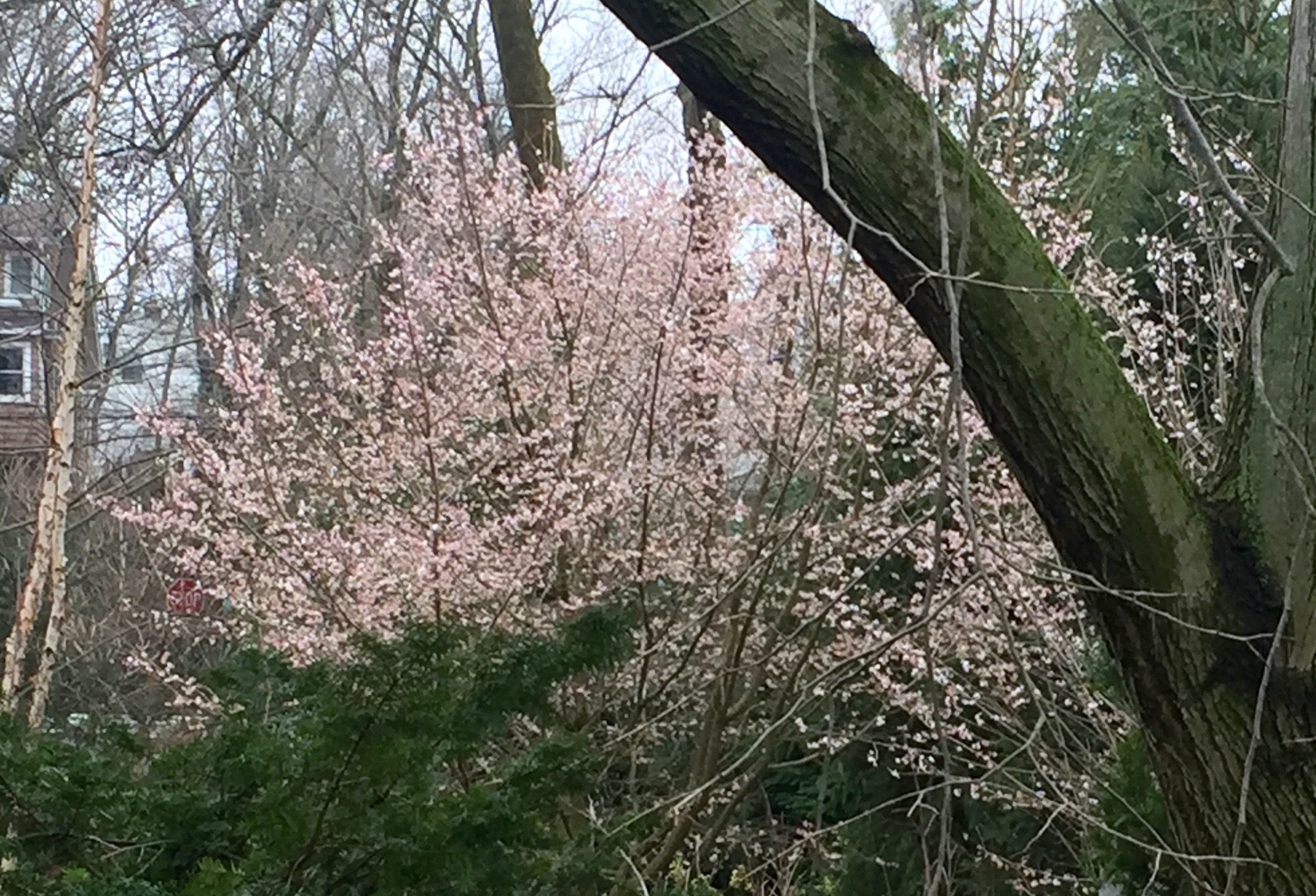Christmas week cherry blossoms.
BY REBECCA THIERMAN & CATHERINE WACHS
With the warmest October and December on record, Westchester and Connecticut are experiencing temperatures more in line with early spring than early winter. So what does this mean for your garden?
Spring bulbs and irises are starting to sprout. If the weather stays warm enough they will continue to bloom. If not, subsequent frosts will stop their growth, and may freeze the leaf tips, but your flowers will bloom normally once spring arrives.
Broad leafed evergreens like rhododendrons and azaleas haven’t fared well these last few years. We’ve noticed this with all our clients’ properties around southern Westchester and Sound Shore communities. The large temperature swings stress these shrubs more than fine-needled evergreens. Some rhododendron buds are starting to swell. Rhododendrons flower in spring and then set their buds shortly after bloom for the next spring’s flowers. The warm weather could disrupt this cycle if the buds freeze after partly opening. If these are damaged, it’s possible that these buds will no longer be viable. If the buds fully bloom in winter, they will not re-bloom in the spring.
This holds true for many spring blooming shrubs and trees. We have seen forsythia, tree peonies and some cherry trees blooming during Christmas week. If plants bloom (or fail to bloom due to freezing), they will miss the short window when pollinators visit. That means less flowers and fruit for us in the following year.
Red buds swelling on tree peonies and raspberries blooming in December in Westchester, NY
What can be done?
Now: Burlap Screen. Schip, and cherry laurels (Prunus laurocerasus ‘Schipkaensis’) are loving the warm weather. But once winter stays cold, as is likely for January, laurels and other broadleaf evergreen shrubs like hollies and rhodos should be burlapped for protection from the strong cold winds and corrosive road salt, which can cause burning and dieback. We have found that physical protection with burlap works better than the anti-dessicant sprays. Make sure the burlap isn't touching the leaves.
This Spring: Right Plant, Right Place. When planting new shrubs, site susceptible plants in locations protected from drying winds.
Plant more natives. Flora and fauna timings are matched over centuries of evolution. Add more native plants to your landscape that can feed migratory birds and other critters. They can usually handle this Northeast weather a bit better than exotics.
Next Fall: Leaving Leaves. Leaf mulch insulates plants by trapping air between the leaves. This means a bit of advance planning in fall. Instead of blowing leaves or bagging them at the curb, blow them into your garden beds or mulch them into your grass (great for the soil under the lawn). It is quite difficult to get the “mow, blow and go” crews to learn a more sustainable technique. Talk with the company owner. If you are ready to jettison your gardener, click here for a list of landscapers who mulch leaves.
Now and Beyond: Carbon reduction. While this is a long-term, global effort, each of us contribute to– and can reduce– our carbon footprint. Planting more trees and shrubs is a beautiful way to remove carbon from the air. See how much you are contributing to global warming with Con Edison’s carbon calculator. Little changes add up to a lot, as this calculator will show you.



